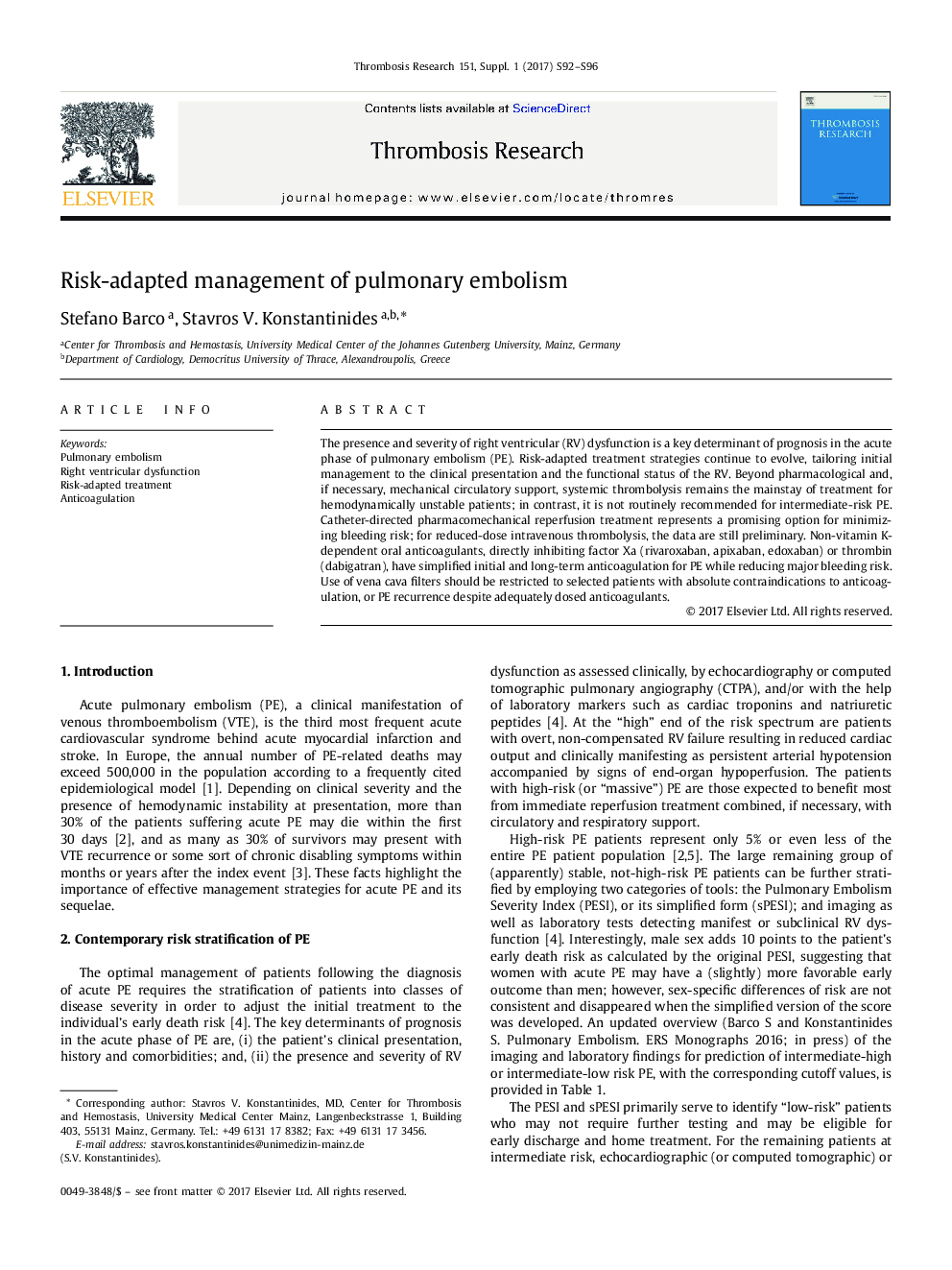| Article ID | Journal | Published Year | Pages | File Type |
|---|---|---|---|---|
| 5622081 | Thrombosis Research | 2017 | 5 Pages |
Abstract
The presence and severity of right ventricular (RV) dysfunction is a key determinant of prognosis in the acute phase of pulmonary embolism (PE). Risk-adapted treatment strategies continue to evolve, tailoring initial management to the clinical presentation and the functional status of the RV. Beyond pharmacological and, if necessary, mechanical circulatory support, systemic thrombolysis remains the mainstay of treatment for hemodynamically unstable patients; in contrast, it is not routinely recommended for intermediate-risk PE. Catheter-directed pharmacomechanical reperfusion treatment represents a promising option for minimizing bleeding risk; for reduced-dose intravenous thrombolysis, the data are still preliminary. Non-vitamin K-dependent oral anticoagulants, directly inhibiting factor Xa (rivaroxaban, apixaban, edoxaban) or thrombin (dabigatran), have simplified initial and long-term anticoagulation for PE while reducing major bleeding risk. Use of vena cava filters should be restricted to selected patients with absolute contraindications to anticoagulation, or PE recurrence despite adequately dosed anticoagulants.
Related Topics
Health Sciences
Medicine and Dentistry
Cardiology and Cardiovascular Medicine
Authors
Stefano Barco, Stavros V. MD,
